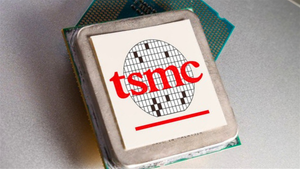
Power conversion and control solutions provider Vicor Corporation (NASDAQ: VICR) reported Q2 CY2025 results topping the market’s revenue expectations, with sales up 64.3% year on year to $141 million. Its GAAP profit of $0.91 per share was significantly above analysts’ consensus estimates.
Is now the time to buy Vicor? Find out by accessing our full research report, it’s free.
Vicor (VICR) Q2 CY2025 Highlights:
- Revenue: $141 million vs analyst estimates of $96.43 million (64.3% year-on-year growth, 46.3% beat)
- EPS (GAAP): $0.91 vs analyst estimates of $0.11 (significant beat)
- Operating Margin: 32.2%, up from 2.9% in the same quarter last year
- Backlog: $155.2 million at quarter end, in line with the same quarter last year
- Market Capitalization: $2.16 billion
Commenting on second quarter performance, Chief Executive Officer Dr. Patrizio Vinciarelli stated: “Having brought to fruition our first ITC action with cease-and-desist and exclusion orders, we are pursuing additional actions to curtail importation into the US of infringing power and computing systems sourced from contract manufacturers by unlicensed OEMs and Hyper-scalers.”
Company Overview
Founded by a researcher at the Massachusetts Institute of Technology, Vicor (NASDAQ: VICR) provides electrical power conversion and delivery products for a range of industries.
Revenue Growth
Reviewing a company’s long-term sales performance reveals insights into its quality. Any business can put up a good quarter or two, but the best consistently grow over the long haul. Over the last five years, Vicor grew its sales at a solid 9.6% compounded annual growth rate. Its growth beat the average industrials company and shows its offerings resonate with customers.
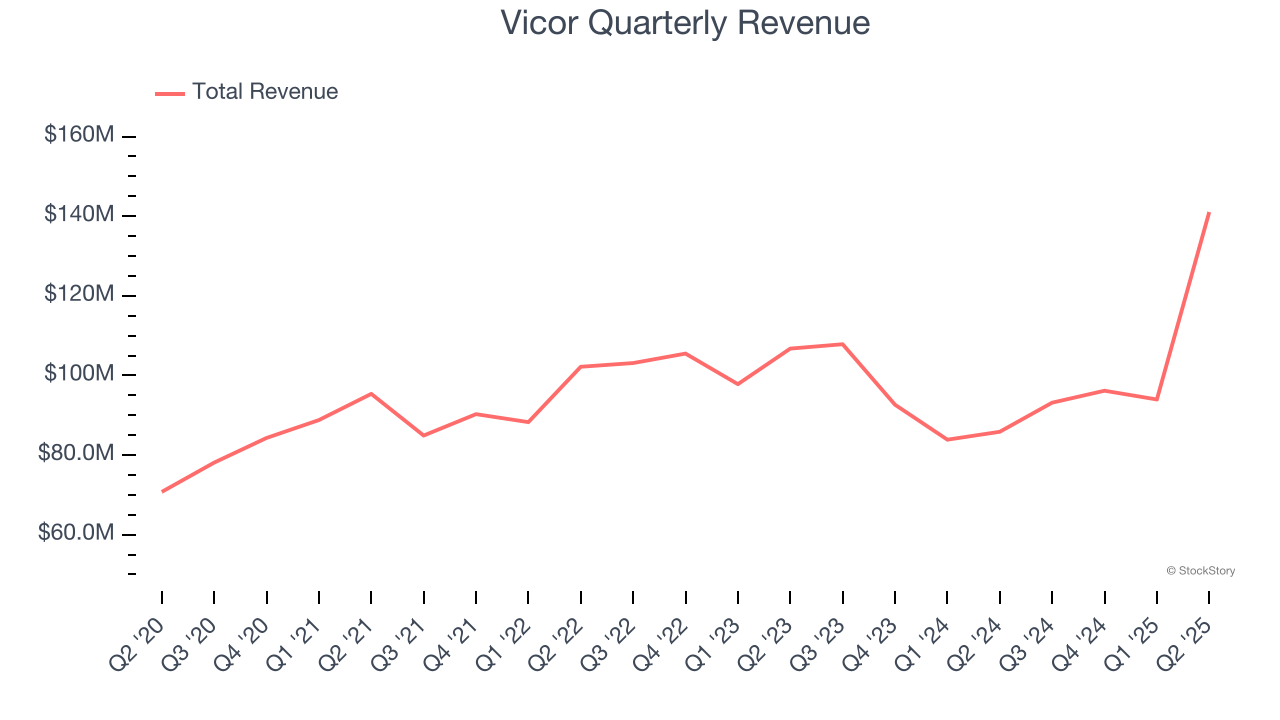
Long-term growth is the most important, but within industrials, a half-decade historical view may miss new industry trends or demand cycles. Vicor’s recent performance shows its demand has slowed as its annualized revenue growth of 1.3% over the last two years was below its five-year trend. We also note many other Electronic Components businesses have faced declining sales because of cyclical headwinds. While Vicor grew slower than we’d like, it did do better than its peers. 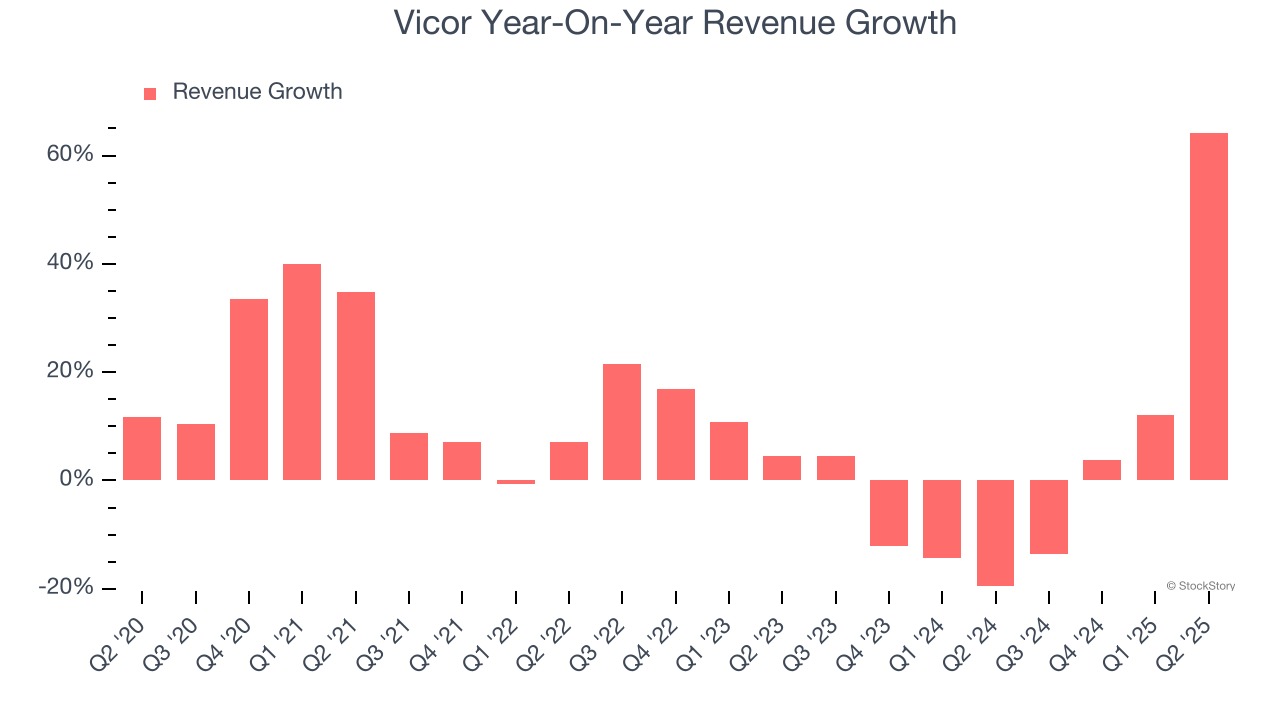
We can dig further into the company’s revenue dynamics by analyzing its backlog, or the value of its outstanding orders that have not yet been executed or delivered. Vicor’s backlog reached $155.2 million in the latest quarter and was flat over the last two years. Because this number is in line with its revenue growth, we can see the company effectively balanced its new order intake and fulfillment processes. 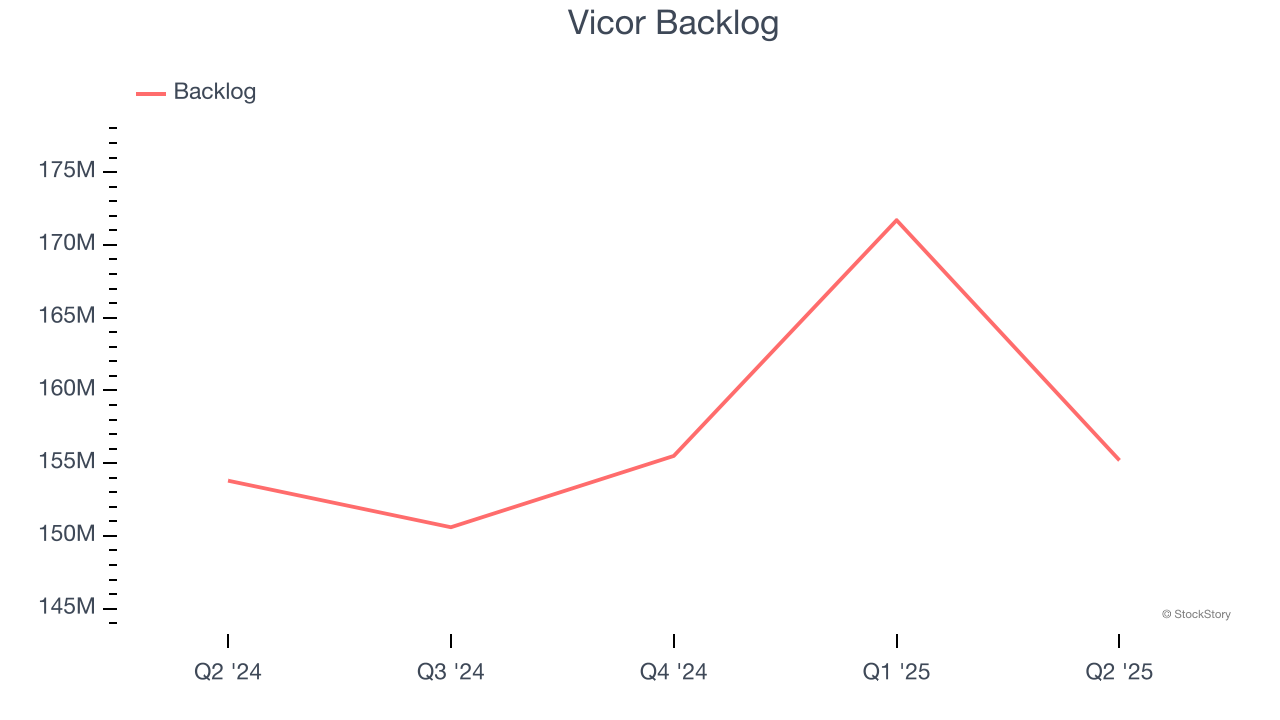
This quarter, Vicor reported magnificent year-on-year revenue growth of 64.3%, and its $141 million of revenue beat Wall Street’s estimates by 46.3%.
Looking ahead, sell-side analysts expect revenue to grow 2.4% over the next 12 months, similar to its two-year rate. While this projection suggests its newer products and services will catalyze better top-line performance, it is still below the sector average.
Software is eating the world and there is virtually no industry left that has been untouched by it. That drives increasing demand for tools helping software developers do their jobs, whether it be monitoring critical cloud infrastructure, integrating audio and video functionality, or ensuring smooth content streaming. Click here to access a free report on our 3 favorite stocks to play this generational megatrend.
Operating Margin
Vicor’s operating margin has been trending up over the last 12 months and averaged 11.6% over the last five years. Its solid profitability for an industrials business shows it’s an efficient company that manages its expenses effectively. This result isn’t surprising as its high gross margin gives it a favorable starting point.
Looking at the trend in its profitability, Vicor’s operating margin might fluctuated slightly but has generally stayed the same over the last five years. This raises questions about the company’s expense base because its revenue growth should have given it leverage on its fixed costs, resulting in better economies of scale and profitability.
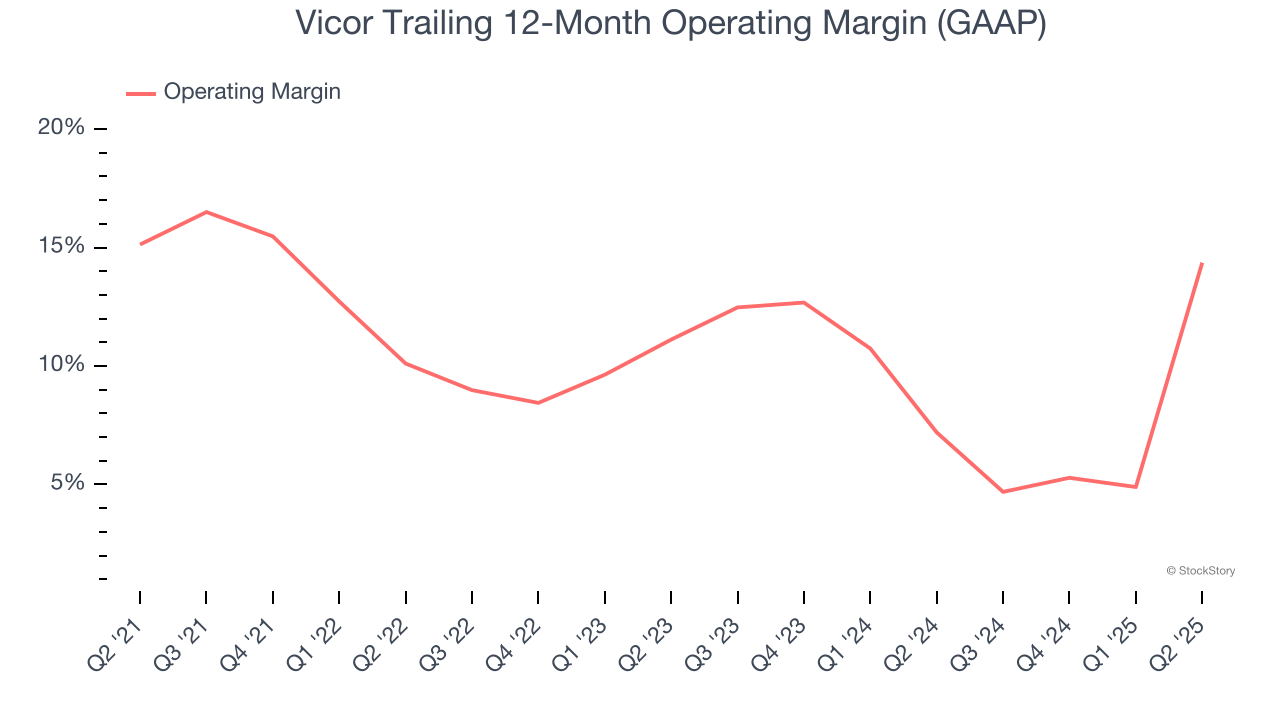
In Q2, Vicor generated an operating margin profit margin of 32.2%, up 29.2 percentage points year on year. The increase was solid, and because its operating margin rose more than its gross margin, we can infer it was more efficient with expenses such as marketing, R&D, and administrative overhead.
Earnings Per Share
We track the long-term change in earnings per share (EPS) for the same reason as long-term revenue growth. Compared to revenue, however, EPS highlights whether a company’s growth is profitable.
Vicor’s EPS grew at an astounding 50.4% compounded annual growth rate over the last five years, higher than its 9.6% annualized revenue growth. This tells us the company became more profitable on a per-share basis as it expanded.
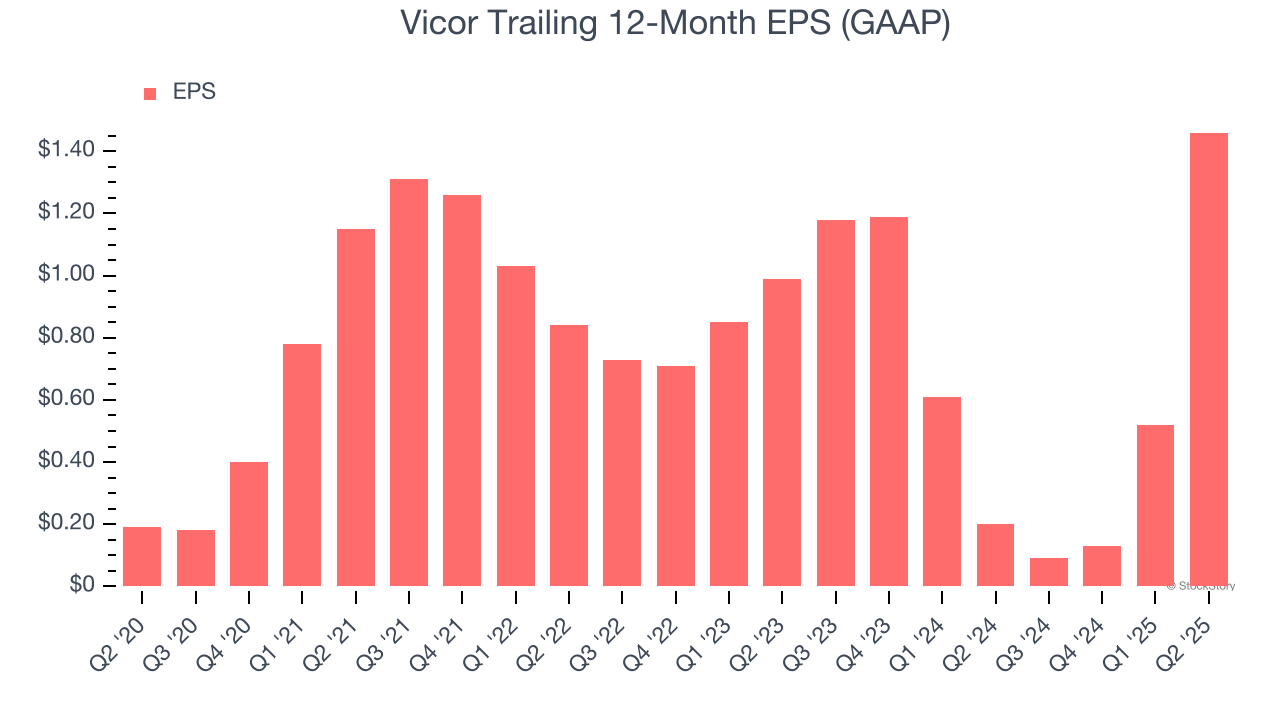
Like with revenue, we analyze EPS over a more recent period because it can provide insight into an emerging theme or development for the business.
For Vicor, its two-year annual EPS growth of 21.4% was lower than its five-year trend. We still think its growth was good and hope it can accelerate in the future.
In Q2, Vicor reported EPS at $0.91, up from negative $0.03 in the same quarter last year. This print easily cleared analysts’ estimates, and shareholders should be content with the results. Over the next 12 months, Wall Street expects Vicor’s full-year EPS of $1.46 to shrink by 28.1%.
Key Takeaways from Vicor’s Q2 Results
We were impressed by how significantly Vicor blew past analysts’ revenue and EPS expectations this quarter. Zooming out, we think this quarter featured some important positives. The stock traded up 31.1% to $59.16 immediately following the results.
Vicor may have had a good quarter, but does that mean you should invest right now? When making that decision, it’s important to consider its valuation, business qualities, as well as what has happened in the latest quarter. We cover that in our actionable full research report which you can read here, it’s free.


